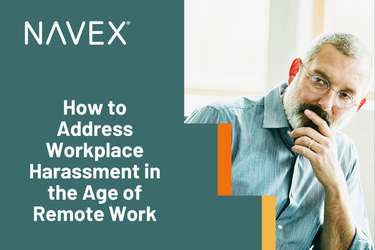In my last post, I explored the rise of the #MeToo movement in corporate culture: the shifts in technology and social standards that allowed simmering resentments at harassment and workplace bullying to rise up as a chorus — one loud enough that companies now defend their brands by imposing strong ethical standards, rather than buying off accusers.
That post looked at the big picture. Today let’s look at how this new world affects the specific elements of corporate compliance programs.
First, let’s remember the shift that’s happening. “Protecting the brand” is now defined by the company’s ability not just to meet regulatory requirements, but the ability to meet high standards of personal conduct — and you must be able to demonstrate that ability to any stakeholder that asks, from employee to regulator to customer to nosy member of the public.
OK, if that’s the brave new world, what systems or practices does the compliance program need to improve? Which ones do you need to create or retire? What capabilities must your compliance program be able to deliver at all times?
A Speaking Upward Culture
One point I raised previously is that employees actually have spoken about harassing bosses since time immemorial — they just haven’t been speaking upward, to senior executives.
Instead, they spoke sideways to fellow employees, warning each other about which manager was a handsy creep or an insecure bully. Or they spoke outward to prospective new hires warning them off, or sometimes to plaintiff lawyers or the media. They spoke around the offending executive, plotting ways to get revenge or get away.
They spoke, but not upward. Not to the people who could remedy the situation, because historically the “remedy” was to send the employee packing and protect the harasser, rather than to hold that harasser accountable.
That’s changed. Now more companies want to hold executives accountable, so they need those employees who are in the know, but also in vulnerable positions. They need those employees to speak upward to them, rather than in some other direction that puts the organization in a worse position.
That’s the shift in culture that ethics and compliance officers, often working hand-in-hand with the HR department, need to foster.
Focus on Incentives
The best way to foster change is to reward people for doing it. For an issue as difficult as harassment, however, where the objective is to foster a sense of trust that employees can speak up, that’s going to be a complex equation to solve.
My favorite example of a company skillfully threading that needle remains Texas Health Resources. Texas Health requires all managers who receive reports of harassment to pass those complaints to HR immediately; and trains employees that they can always bring a harassment allegation to HR directly, too.
If an employee “speaks around” his or her manager by going directly to HR, that also suggests a possible problem in office subculture or leadership that might warrant attention.
If the HR team discovers that a manager knew about harassment but didn’t report it as required, the manager soon has a difficult conversation with HR about that. Or if an employee “speaks around” his or her manager by going directly to HR, that also suggests a possible problem in office subculture or leadership that might warrant attention.
I love this approach to fostering a speak-up culture because it drives both positive and negative incentives. That is, the manager faces strong negative consequences for betraying an employee who trusts enough to speak up. Working toward a more open, trusting culture, however, also brings positive benefits: fewer visits from HR inquiring about the state of the culture.
Zero-Tolerance on Sexual Harassment Goes Beyond Resolving Individual Incidents
Other supporting measures go into making that approach succeed, of course: extensive training so people understand the policy; whistleblower systems so uneasy employees can file anonymously, and so forth.
Still, the fundamental question is how to drive managers to foster a culture of trust, so employees feel comfortable speaking upward. Thoughtful policies like this one show a practical way forward.
Manage for Consistency
One mortal enemy to a strong corporate culture is a jostling collection of subcultures. Not subculture traits are bad — not every department needs to participate in Taco Tuesdays, after all — but subcultures are also where deviations from important policy begin.
Once some pockets of the company handle misconduct differently than others, employees’ trust in the organization starts to suffer. They start to speak among themselves rather than upward to managers, and we’re back to the threat mentioned above.
That means policy management and data analytics will become more important to enforce anti-harassment and anti-retaliation policies uniformly and vigorously.
That point may sound obvious, but remember: it’s very different than what was necessary before the #MeToo movement, when hushing up misconduct was the priority.
That point may sound obvious, but remember: it’s very different than what was necessary before the #MeToo movement, when hushing up misconduct was the priority. In that era, the objective was silence. So long as the subculture achieved the silence — well, the company achieved its goal of protecting the brand.
Today’s objective — demonstrating adherence to high ethical standards — requires a wholly different set of tools. Compliance officers will need systems to push out and govern policies in a uniform manner; and data to prove that those policies are carried out in a uniform manner.
Let’s be honest, too. All of this must rest on a foundation of strong corporate ethics in the boardroom and C-suite, because firing a CEO or superstar employee is going to be tough.
The mechanics of building that culture, however, and deploying the right tools to support it — they’re new, but not rocket science. And you can’t start using them soon enough.









